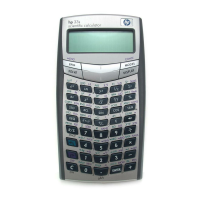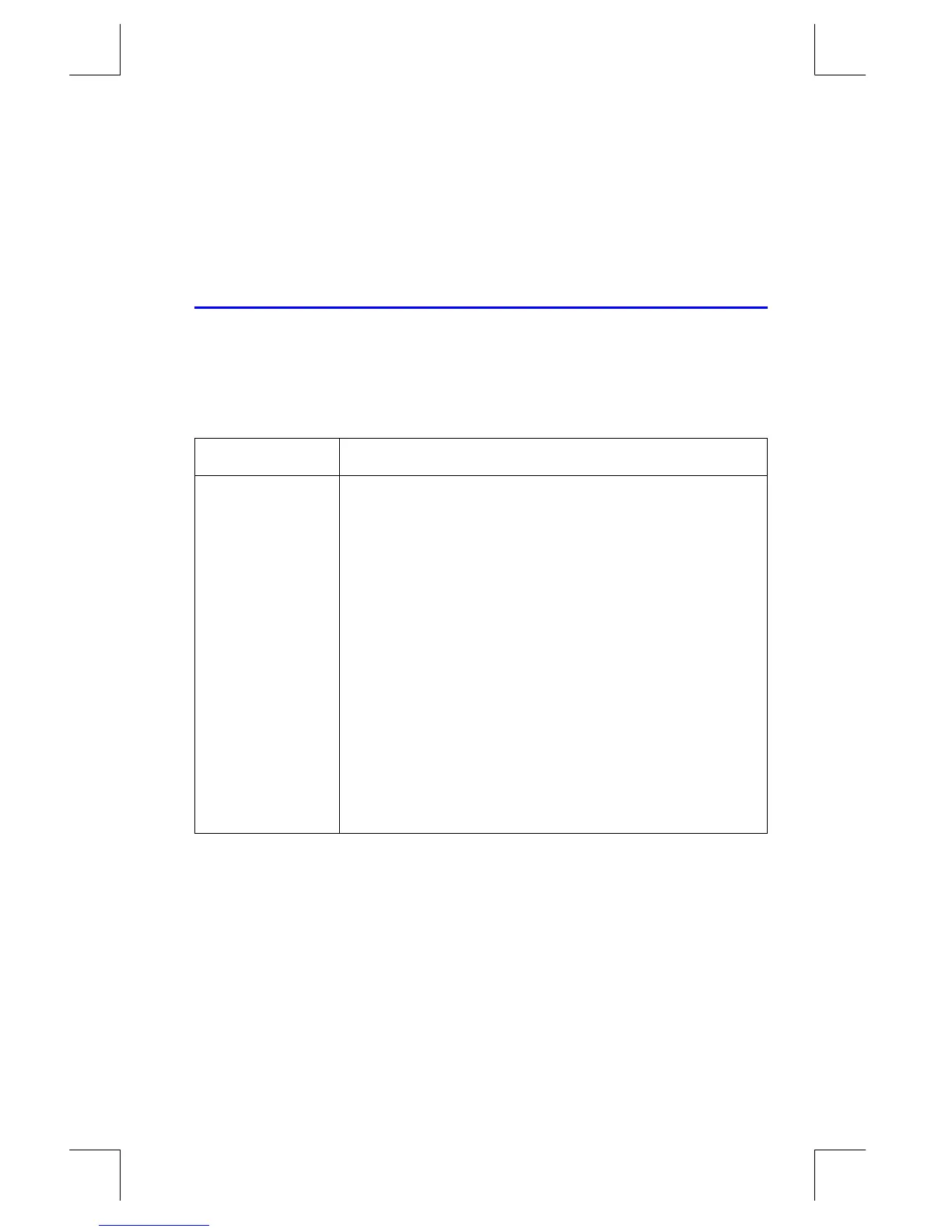Base Conversions and Arithmetic
10–1
File name 33s-E-Manual-1008-Publication(1st).doc Page : 386
Printed Date : 2003/10/8 Size : 13.7 x 21.2 cm
10
Base Conversions and Arithmetic
The BASE menu (
¹
¶
) lets you change the number base used for entering
numbers and other operations (including programming). Changing bases also
converts the displayed number to the new base.
BASE Menu
Menu label Description
{
} Decimal mode. No annunciator. Converts numbers to
base 10. Numbers have integer and fractional parts.
{
} Hexadecimal mode. HEX annunciator on. Converts
numbers to base 16; uses integers only. The top–row keys
become digits
A
through
F
.
{
} Octal mode. OCT annunciator on. Converts numbers to
base 8; uses integers only. The
8
,
9
, and unshifted
top–row keys are inactive.
{
} Binary mode. BIN annunciator on. Converts numbers to
base 2; uses integers only. Digit keys other than
0
and
1
, and the unshifted top–row functions are inactive. If a
number is longer than 12 digits, then the outer top–row
keys (
Ö
and
Õ
) are active for viewing windows.
(See "Windows for Long Binary Numbers" later in this
chapter.)
Examples: Converting the Base of a Number.
The following keystrokes do various base conversions.
Convert 125.99
10
to hexadecimal, octal, and binary numbers.
Keys: Display: Description:
125.99
¹
¶
{
}
Converts just the integer part
(125) of the decimal number to
base 16 and displays this value.

